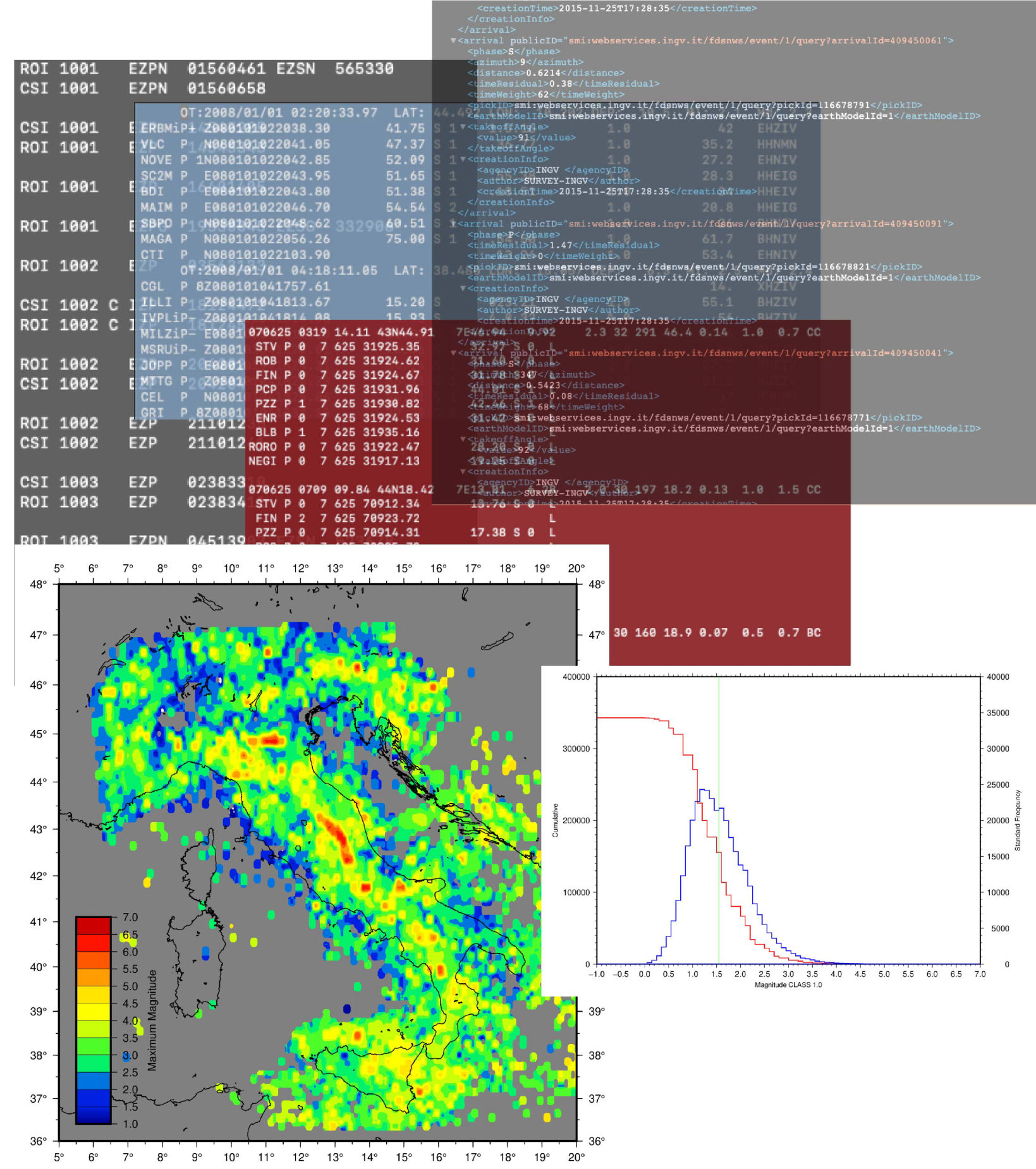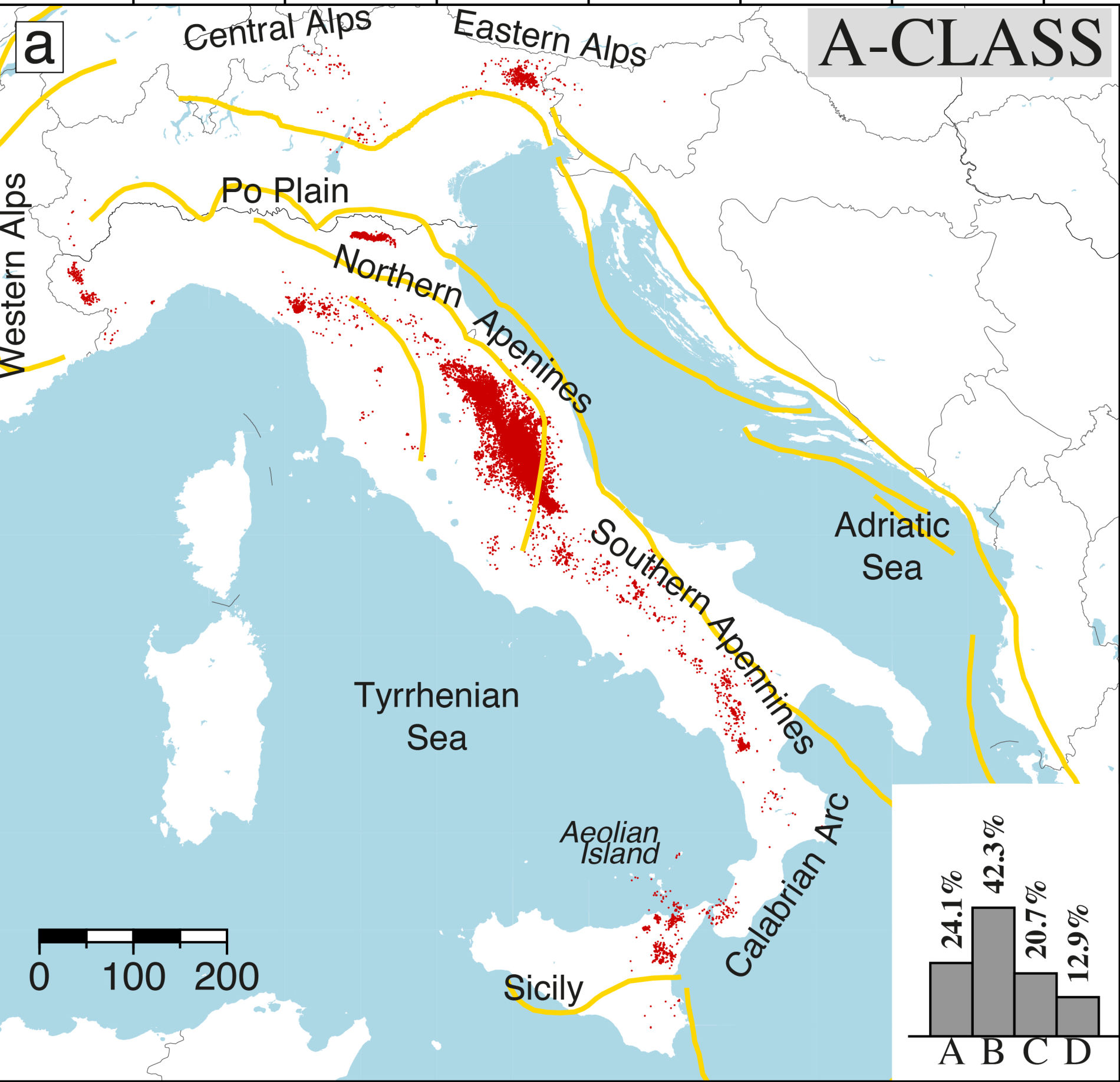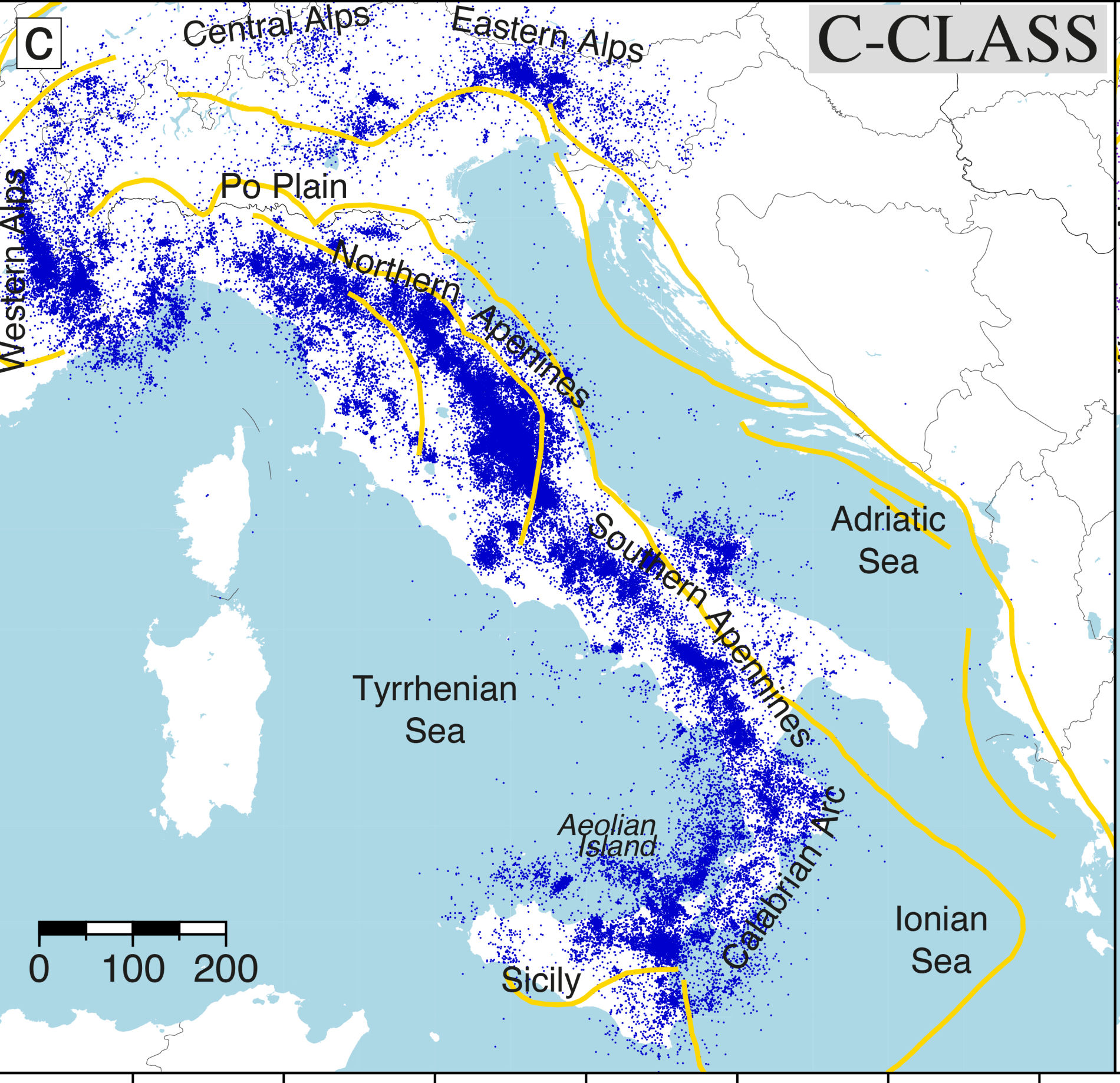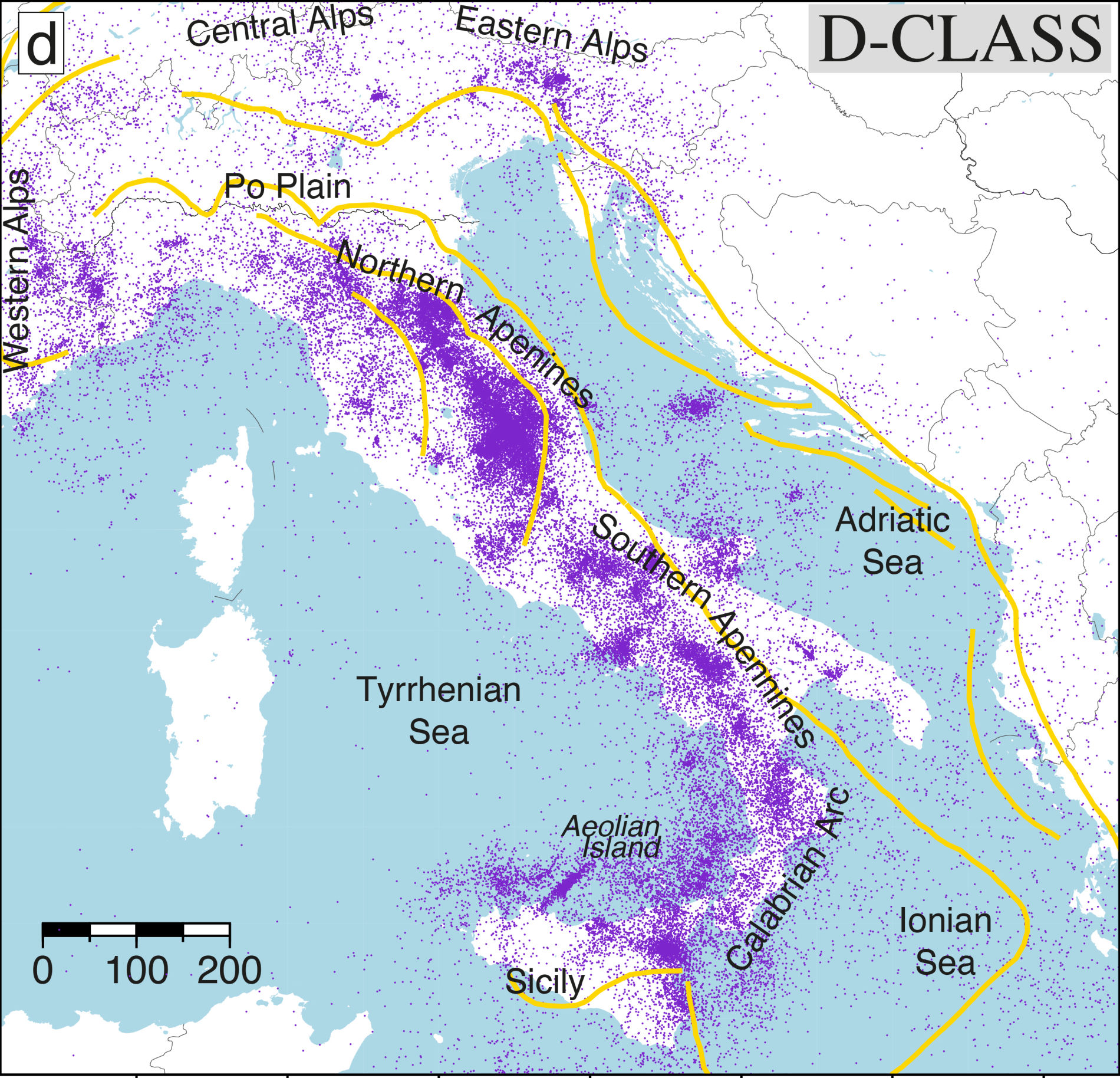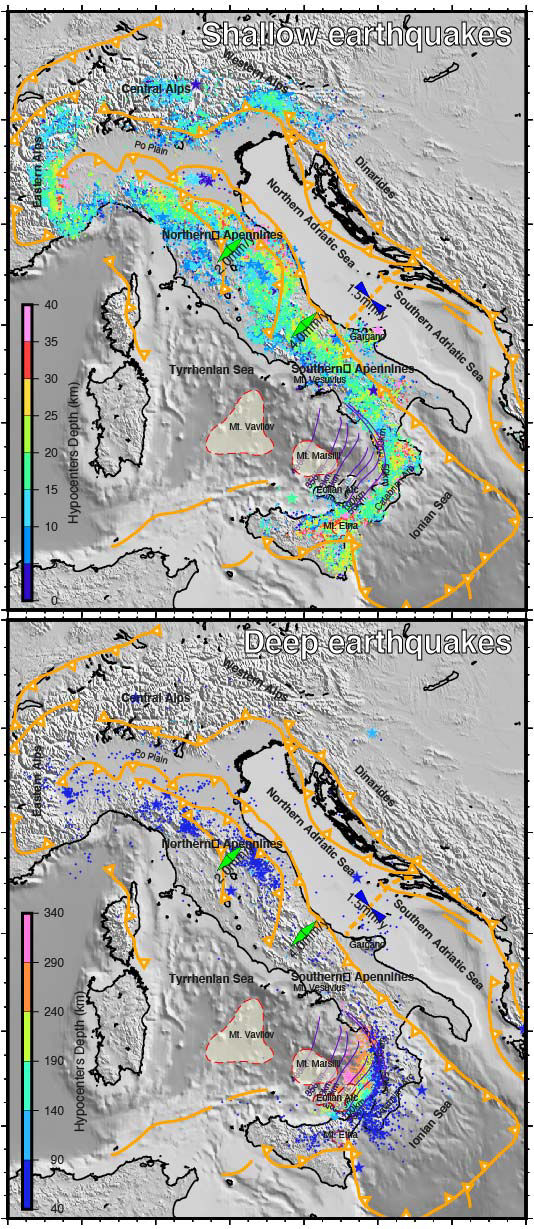
Catalogo delle Localizzazioni ASSolute (CLASS)
Landing page of the Catalog of Absolute (non linear) 3D earthquakes Locations of the Italian region from 1981 to 2018.
Downloads: to download the phases (text) files please use the drop-down menu "CSI 2.0 (Phases 1981-2008)" in the top-bar of this website. Phases from 2009 to 2018 in QML format are available at INGV Terremoti web portal.
To download the whole catalogs in "zipped csv" or "zipped kml", or the single year text files, or to select through the webservice, please use the drop-down menu "Download Locations" in the top-bar of this website.
Citation: to cite this dataset please reference both the following DOIs:
[Paper]: Latorre D., Di Stefano R., Castello B., Michele M., Chiaraluce L. (2023)
"An updated view of the Italian seismicity from probabilistic location in 3D velocity models: The 1981–2018 Italian catalog of absolute earthquake locations (CLASS)".
https://doi.org/10.1016/j.tecto.2022.229664.
[Data set]: Latorre D., Di Stefano R., Castello B., Michele M., Chiaraluce L. (2022)
"Catalogo delle Localizzazioni ASSolute (CLASS): locations (Version 1). Istituto Nazionale di Geofisica e Vulcanologia (INGV)."
https://doi.org/10.13127/class.1.0
